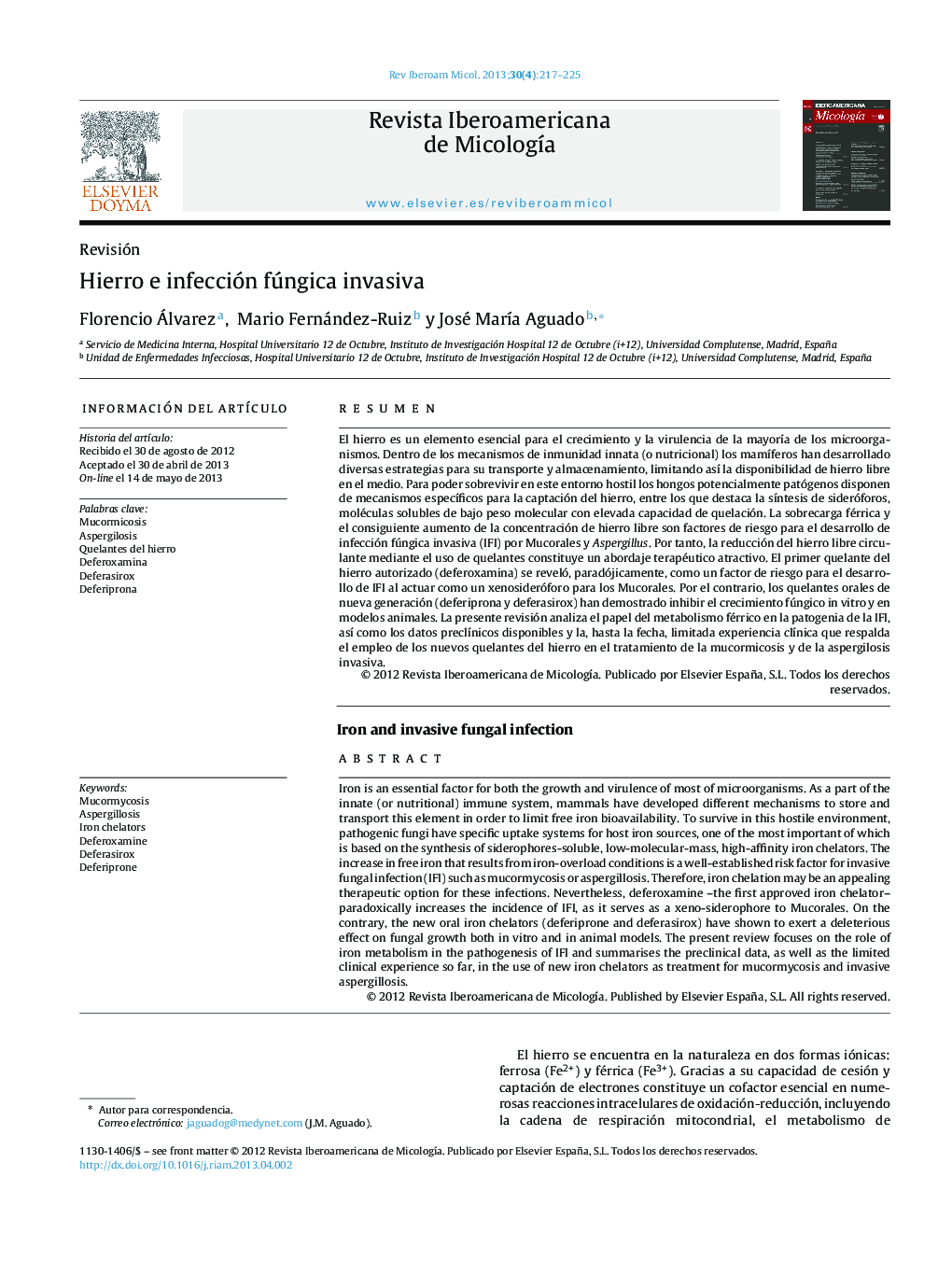| Article ID | Journal | Published Year | Pages | File Type |
|---|---|---|---|---|
| 3418722 | Revista Iberoamericana de Micología | 2013 | 9 Pages |
Abstract
Iron is an essential factor for both the growth and virulence of most of microorganisms. As a part of the innate (or nutritional) immune system, mammals have developed different mechanisms to store and transport this element in order to limit free iron bioavailability. To survive in this hostile environment, pathogenic fungi have specific uptake systems for host iron sources, one of the most important of which is based on the synthesis of siderophores-soluble, low-molecular-mass, high-affinity iron chelators. The increase in free iron that results from iron-overload conditions is a well-established risk factor for invasive fungal infection (IFI) such as mucormycosis or aspergillosis. Therefore, iron chelation may be an appealing therapeutic option for these infections. Nevertheless, deferoxamine -the first approved iron chelator- paradoxically increases the incidence of IFI, as it serves as a xeno-siderophore to Mucorales. On the contrary, the new oral iron chelators (deferiprone and deferasirox) have shown to exert a deleterious effect on fungal growth both in vitro and in animal models. The present review focuses on the role of iron metabolism in the pathogenesis of IFI and summarises the preclinical data, as well as the limited clinical experience so far, in the use of new iron chelators as treatment for mucormycosis and invasive aspergillosis.
Keywords
Related Topics
Life Sciences
Immunology and Microbiology
Microbiology
Authors
Florencio Álvarez, Mario Fernández-Ruiz, José MarÃa Aguado,
